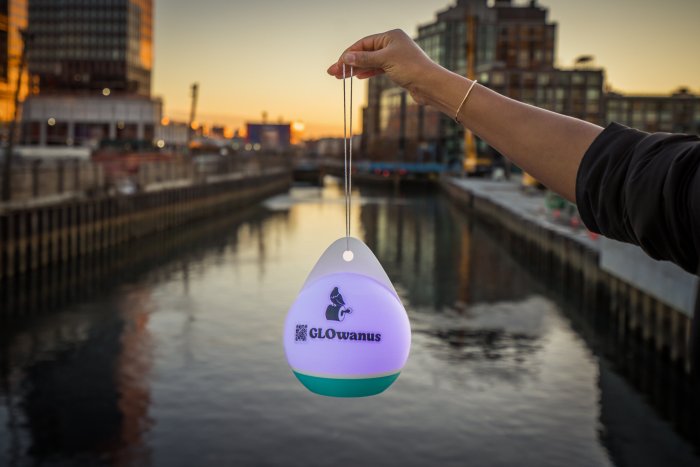This is the story of a man and a pipe, and its consequences could solve a water pollution problem that has plagued this city for more than 100 years.
The man is Bart Chezar, Park Slope resident and environmental engineer, and the pipe is “OH-007,” a sewer discharge that empties into the Gowanus Canal.
Thanks to an innovative plan devised by Chezar, OH-007 could become a model of how to reduce sewer overflow and improve water quality in canals, rivers and the harbor itself.
The problem, of course, is the city’s 130-year-old sewer system, which mixes water from toilets and water from storm drains into the same pipes that go to sewage treatment plants.
During heavy rainfall, that combined system gets so overburdened that feces-filled water gets diverted from overwhelmed sewage plants into nearby waterways. In the Gowanus, the result is 377 million gallons of disgusting water ending up in the sluice every year.
For a long time, the city has said it has a large-scale plan to reduce that horrifying figure, but it won’t entirely eliminate the problem. That’s where Chezar’s “Smart Combined Sewer Overflow Discharge Control Technologies” comes in.
Chezar wants to install radio transmitters on float valves inside the combined sewer pipes, where the decision gets made to send sewage to a treatment facility or directly into a river. In Chezar’s plan, during a heavy rain or snow, the valves would sense that an overflow event is about to happen and transmit signals to receivers in neighborhood buildings. There, large tanks would receive the signals and close their own valves, thereby storing water from those buildings and preventing it from entering, and further overwhelming, the system.
When the wet weather is over, these tanks — also known as cisterns — would open and release their water into the now-unburdened sewer system.
“It’s a feedback system,” Chezar said. “This is used in industry all the time. All I’m doing is connecting that approach to the sewer system, which hasn’t happened in the past.”
Chezar is well-acquainted with such systems, having worked as a research and design engineer for more than 30 years with the New York Power Authority. He’s been trying for years to interest the city in at least testing his cistern chapel, but was told that he would first have to demonstrate that worked before the bureaucrats would allocate any real money.
Then, last December, the city unveiled a new grant program that was charged with funding innovative plans to reduce the combined sewer overflow problem — and, of course, Chezar applied. He won’t know until June whether his sponsoring organization, the NY/NJ Baykeeper, will get the $450,000 grant.
The organizer of the group’s “oyster restoration” project said it’s no surprise that Chezar has come up with an innovative solution to a stinky problem.
“The great thing about Bart is that the enthusiasm he brings to ground-level problem solving is contagious,” said Katie Mosher-Smith, who worked with Chezar to re-establish oyster beds in and around the city.
“His success with getting the state on board was what really brought the project alive. He was able to gather support from all the different government agencies as well as ignite enthusiasm and support from within the community.”
Even before the grant money is announced, Chezar is demonstrating his cistern system could work, moving ahead with a plan to install devices that will change colors to indicate when a combined sewer overflow is imminent. Armed with this information, homeowners could temporarily reduce their water use by turning off their washing machines, dishwashers, or by postponing a shower until the storm has passed.
He is also developing an iPhone app that will have a similar set of color-coded alerts.
Chezar realizes that people could simply ignore the alerts, but he thinks that locals would be more than willing to do their part for a cleaner Gowanus Canal.
“We all want to do good stuff, but this would actually be good stuff in the neighborhood,” Chezar said. “If you give people feedback and show them they can achieve something, they’ll be motivated to do more.”





















